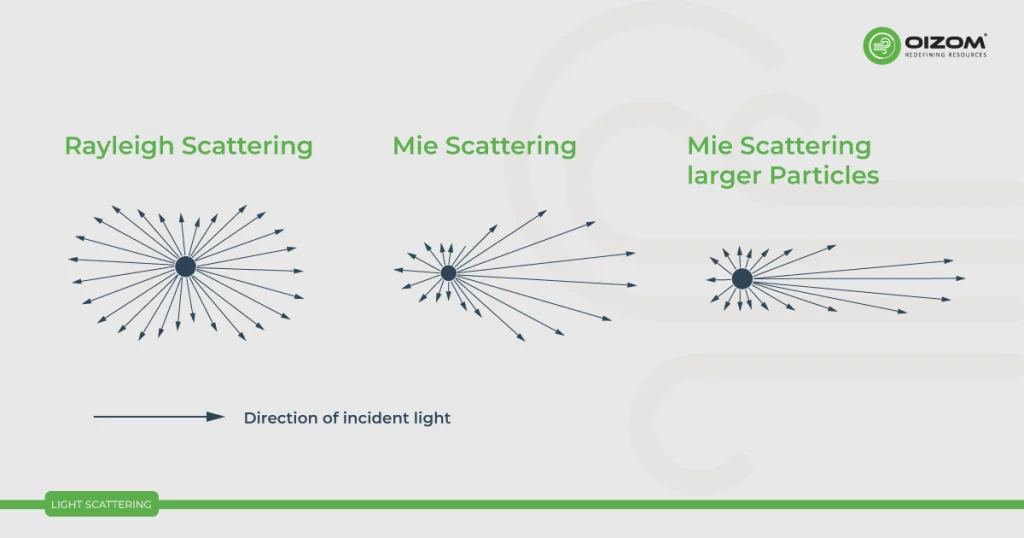Find the terms by letter
Light scattering
Definition
Light scattering is a phenomenon that occurs when light interacts with particles or irregularities in a medium and is redirected in various directions. It is responsible for making substances visible by scattering light in different directions, allowing our eyes to perceive objects. Light scattering plays a crucial role in a wide range of scientific and everyday phenomena, from the blue color of the sky to the sparkle of diamonds and the appearance of fog. The principle of light scattering is based on the scattering of photons (particles of light) as they interact with small particles or irregularities in a medium. This interaction causes the incoming light to change direction and scatter in different ways. There are two main types of light scattering: Reyleigh and Mie scattering. Mie scattering principle is used in optical particle counter to measure concentration of PM. Mie – Mie scattering occurs when the particles or irregularities in the medium are on the same order of magnitude as the wavelength of the incident light or when the medium contains a mixture of particle sizes. Mie scattering is responsible for the white appearance of clouds, the visibility of dust particles in the air, and the sparkle of diamonds. Unlike Rayleigh scattering, Mie scattering does not strongly favor shorter wavelengths, so it scatters light of all colors more evenly.
Definition and Description
Light scattering is a phenomenon in which light waves or photons deviate from their straight-line path as they encounter and interact with particles or irregularities in a medium, such as gas, liquid, or solid. This interaction causes the light to be scattered in various directions. The scattering can occur due to several mechanisms, including Rayleigh scattering, Mie scattering, or Raman scattering, depending on the size and nature of the scattering particles in relation to the wavelength of the incident light. Light scattering is a fundamental process that plays a critical role in various scientific fields, including optics, atmospheric science, and materials characterization. It is used to study particle sizes, concentrations, and the optical properties of materials. Mie scattering principle is used in optical particle counter to measure concentration of PM. Mie – Mie scattering occurs when the particles or irregularities in the medium are on the same order of magnitude as the wavelength of the incident light or when the medium contains a mixture of particle sizes. Mie scattering is responsible for the white appearance of clouds, the visibility of dust particles in the air, and the sparkle of diamonds. Unlike Rayleigh scattering, Mie scattering does not strongly favor shorter wavelengths, so it scatters light of all colors more evenly.



